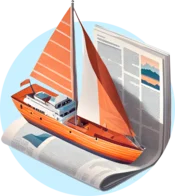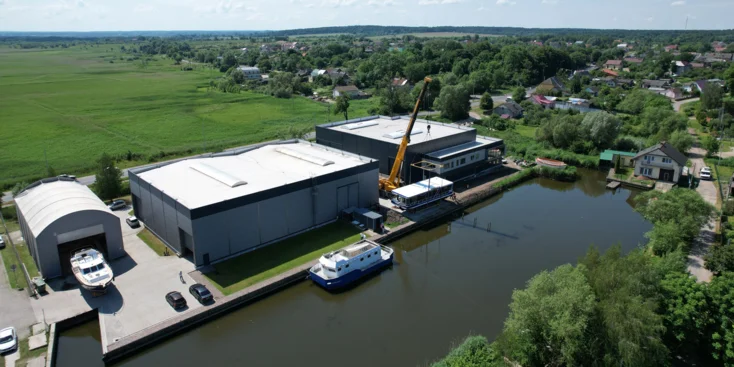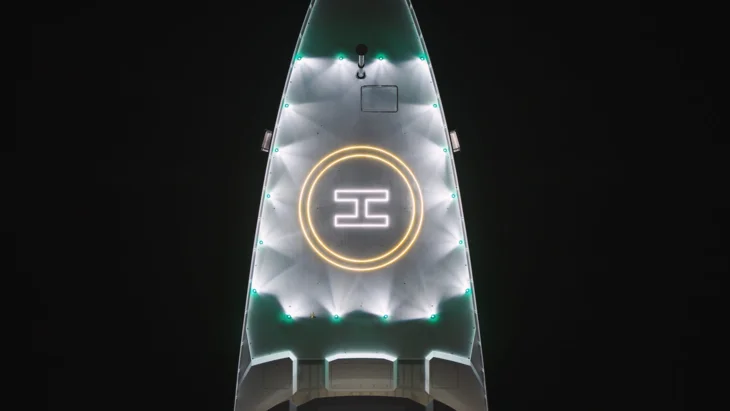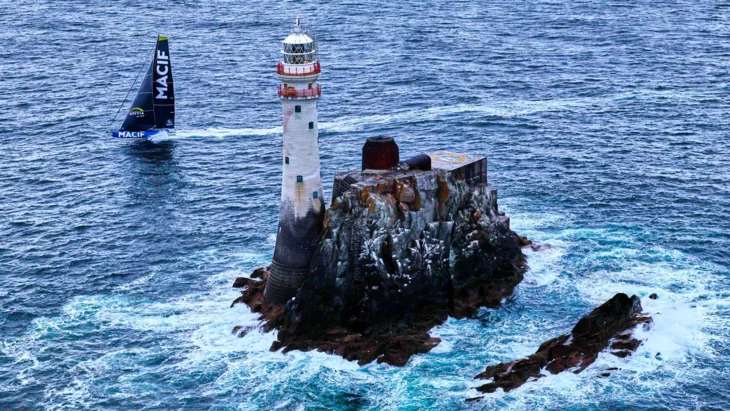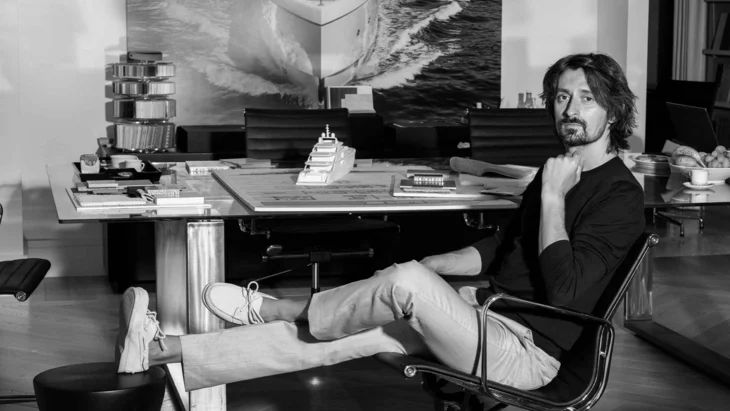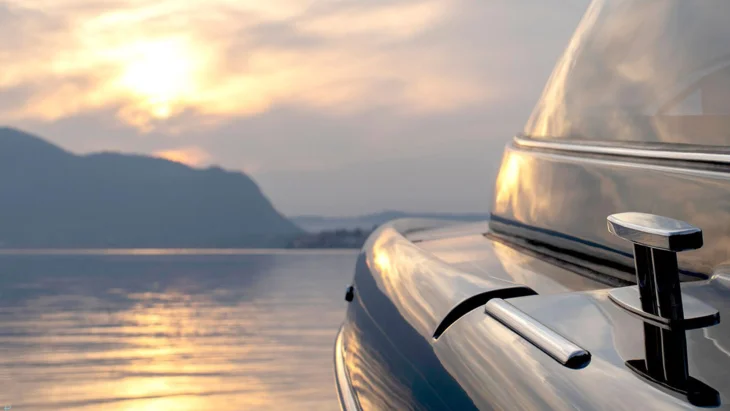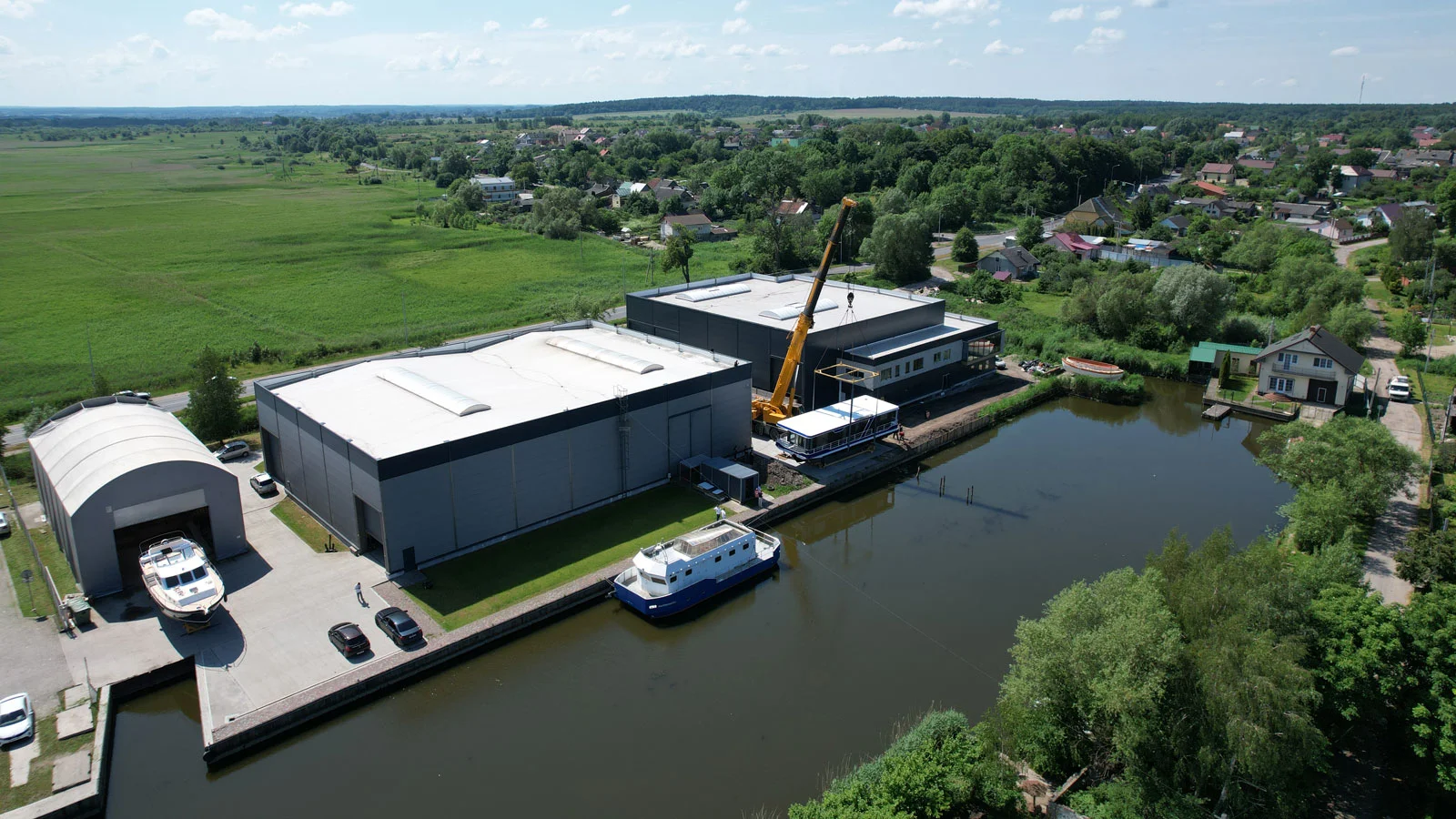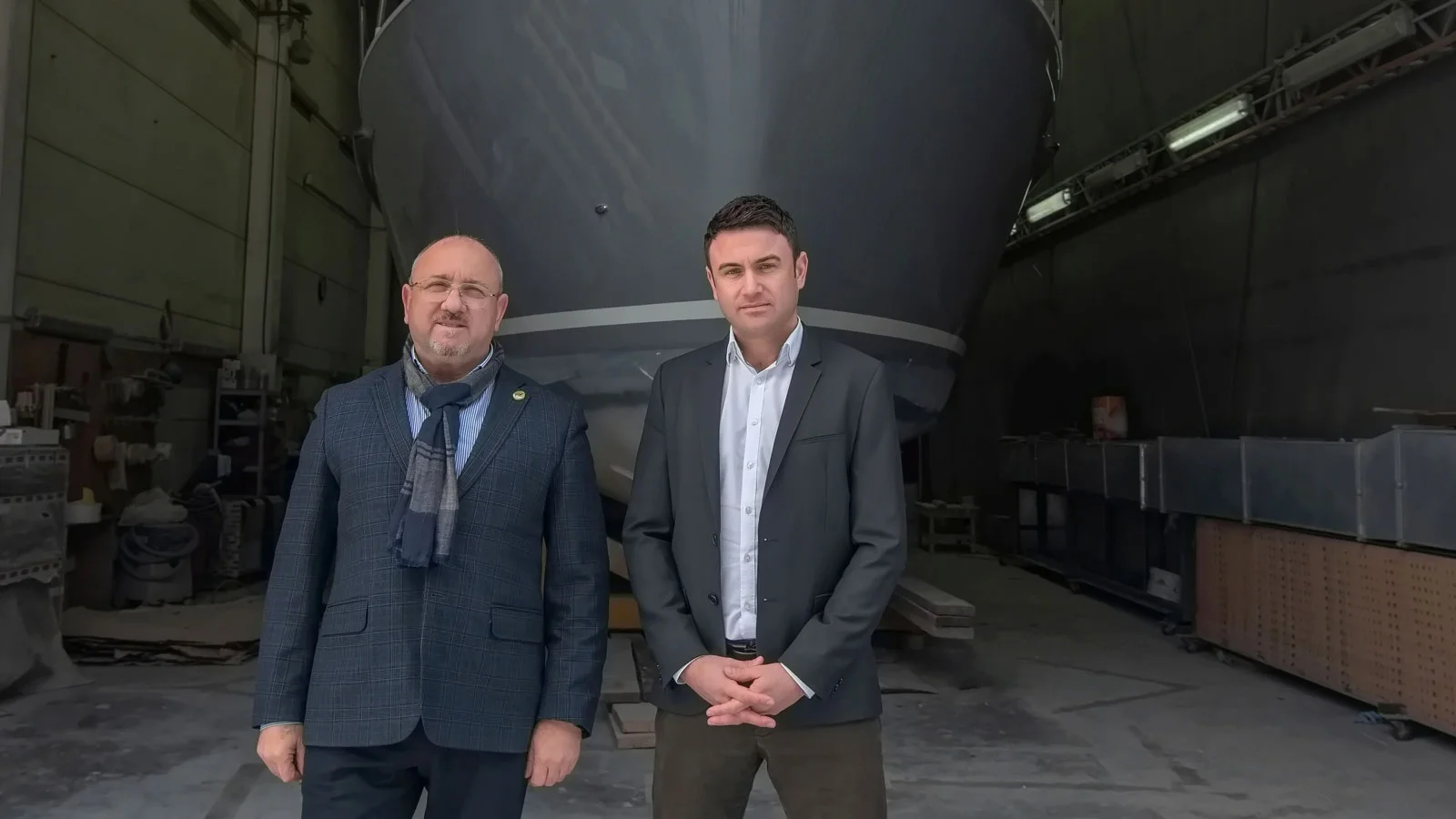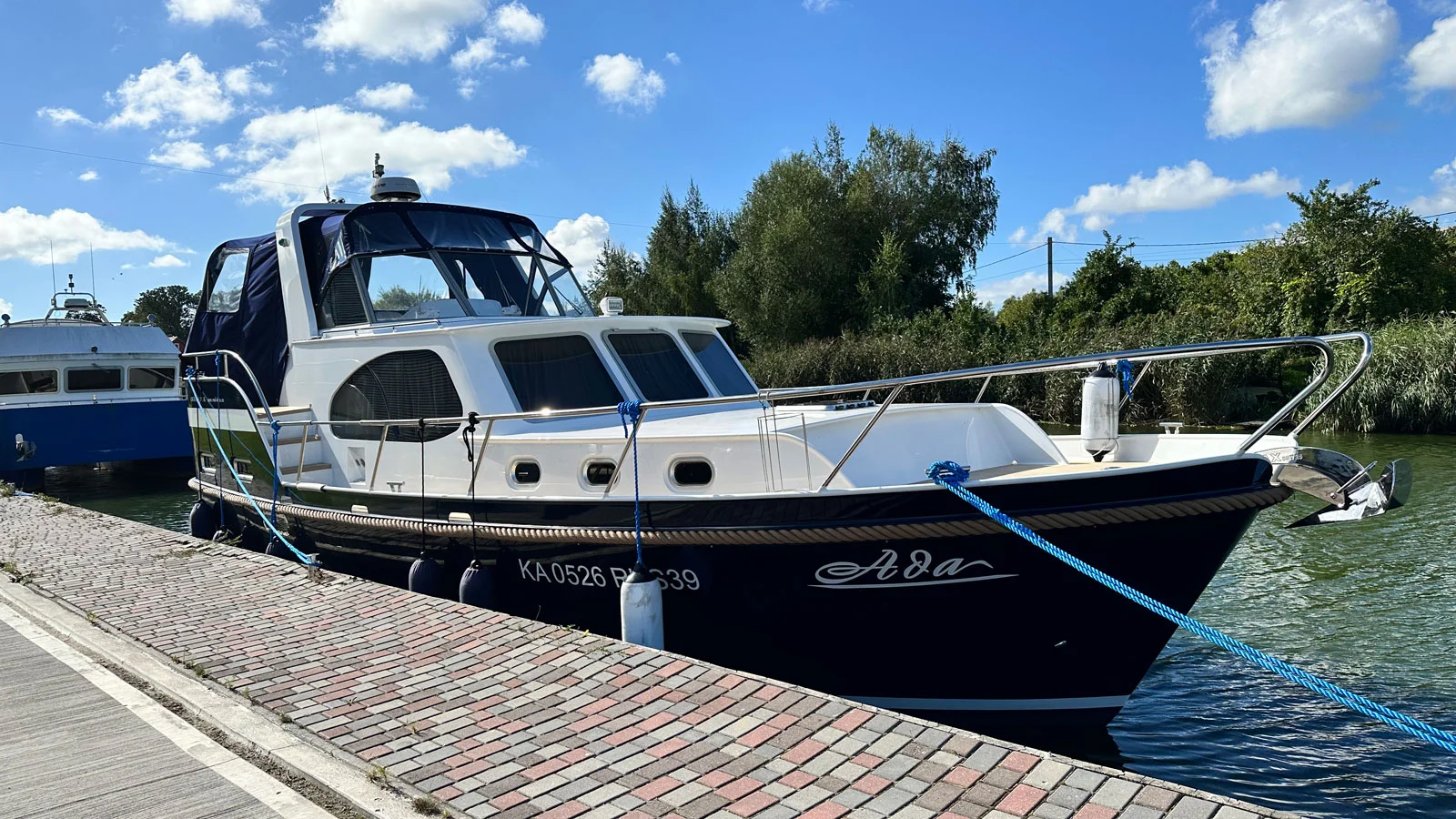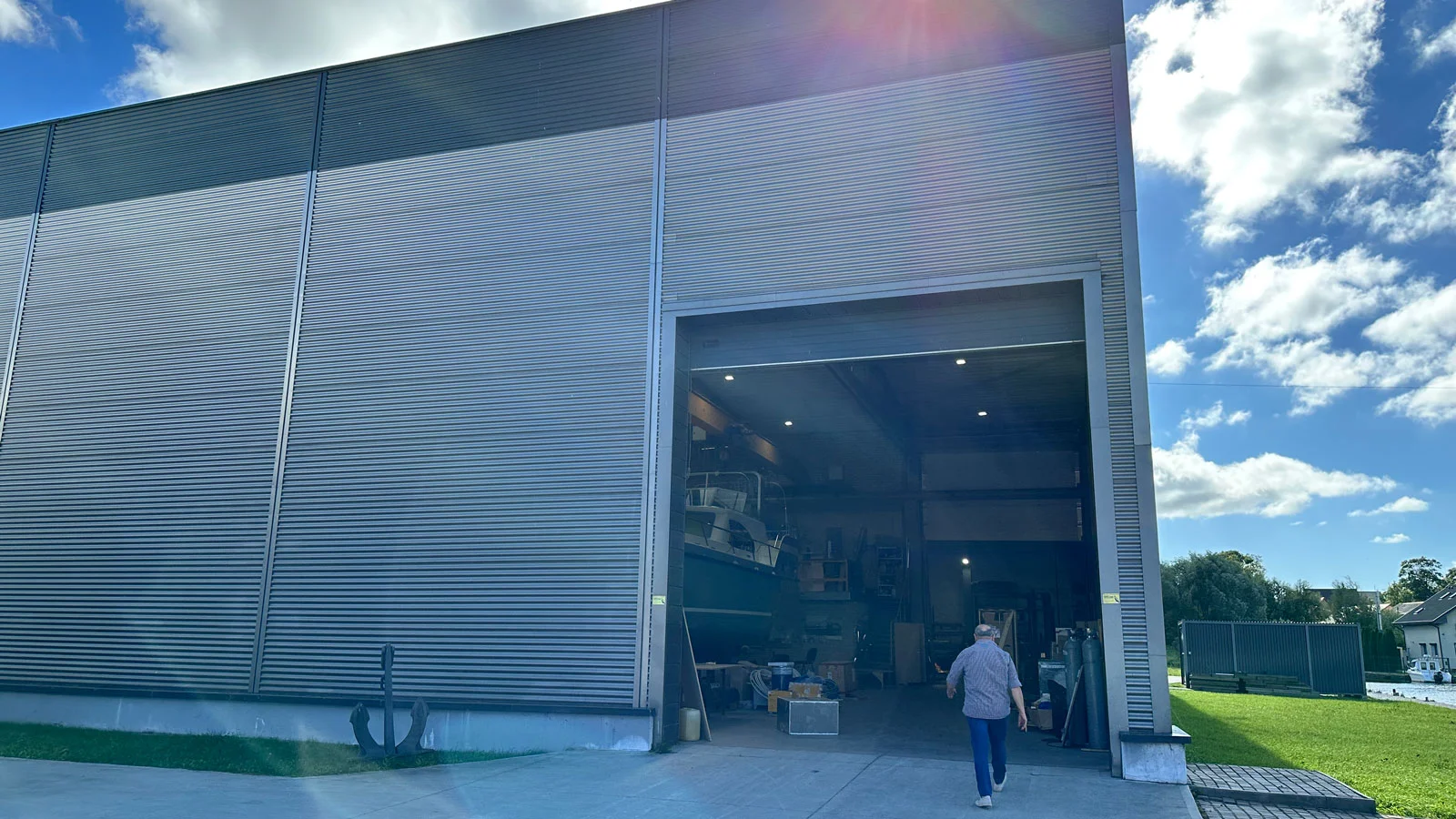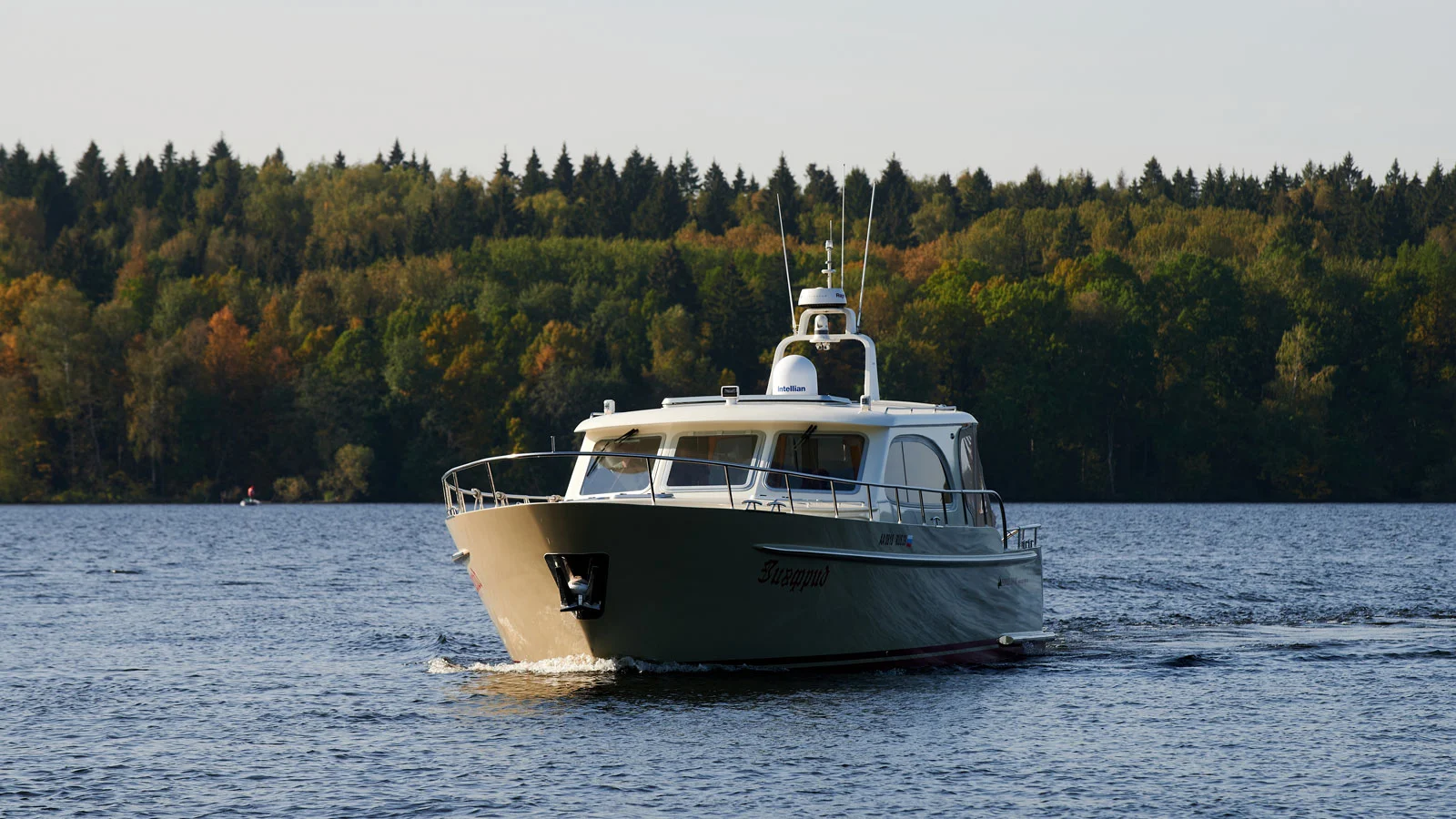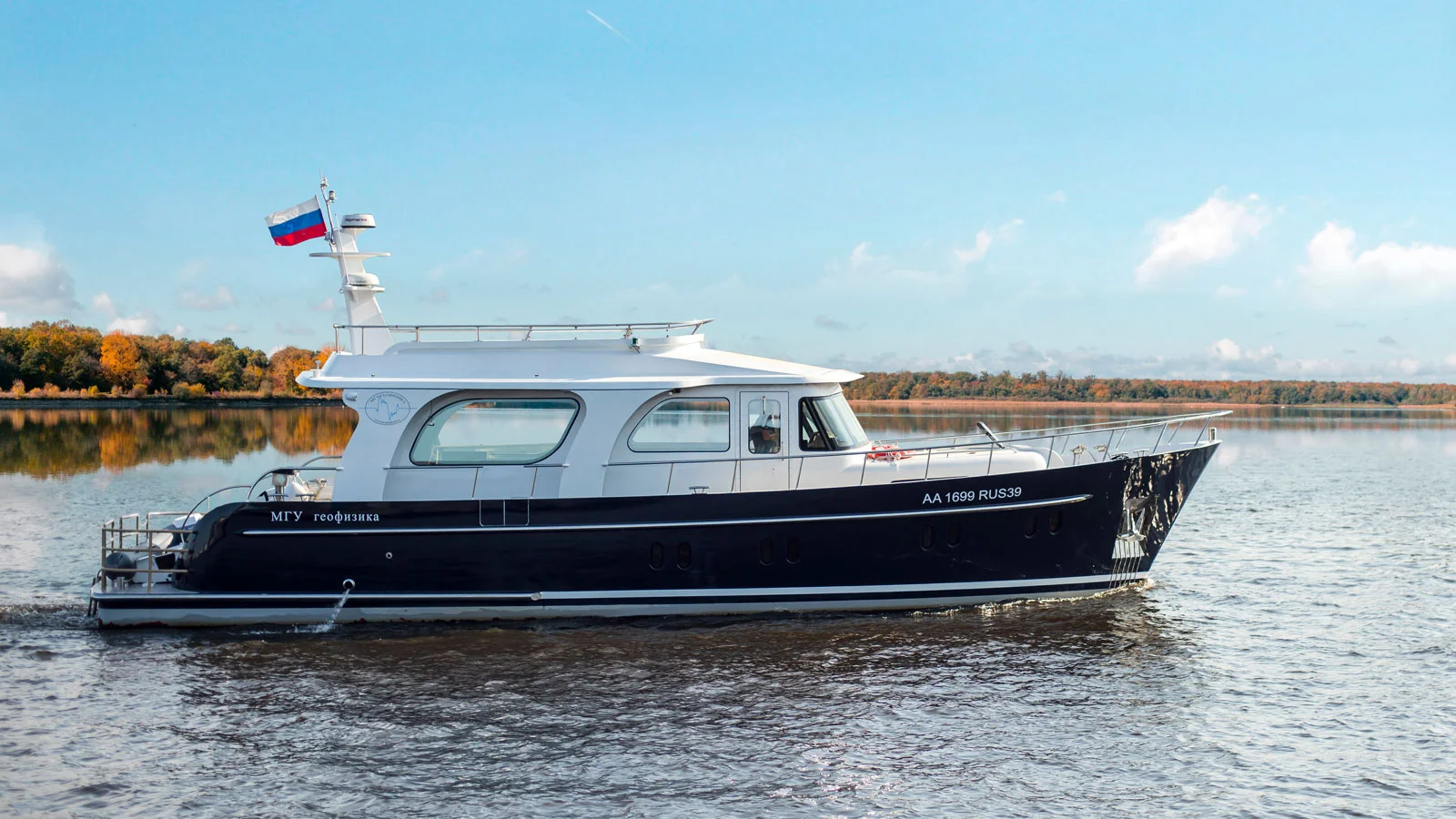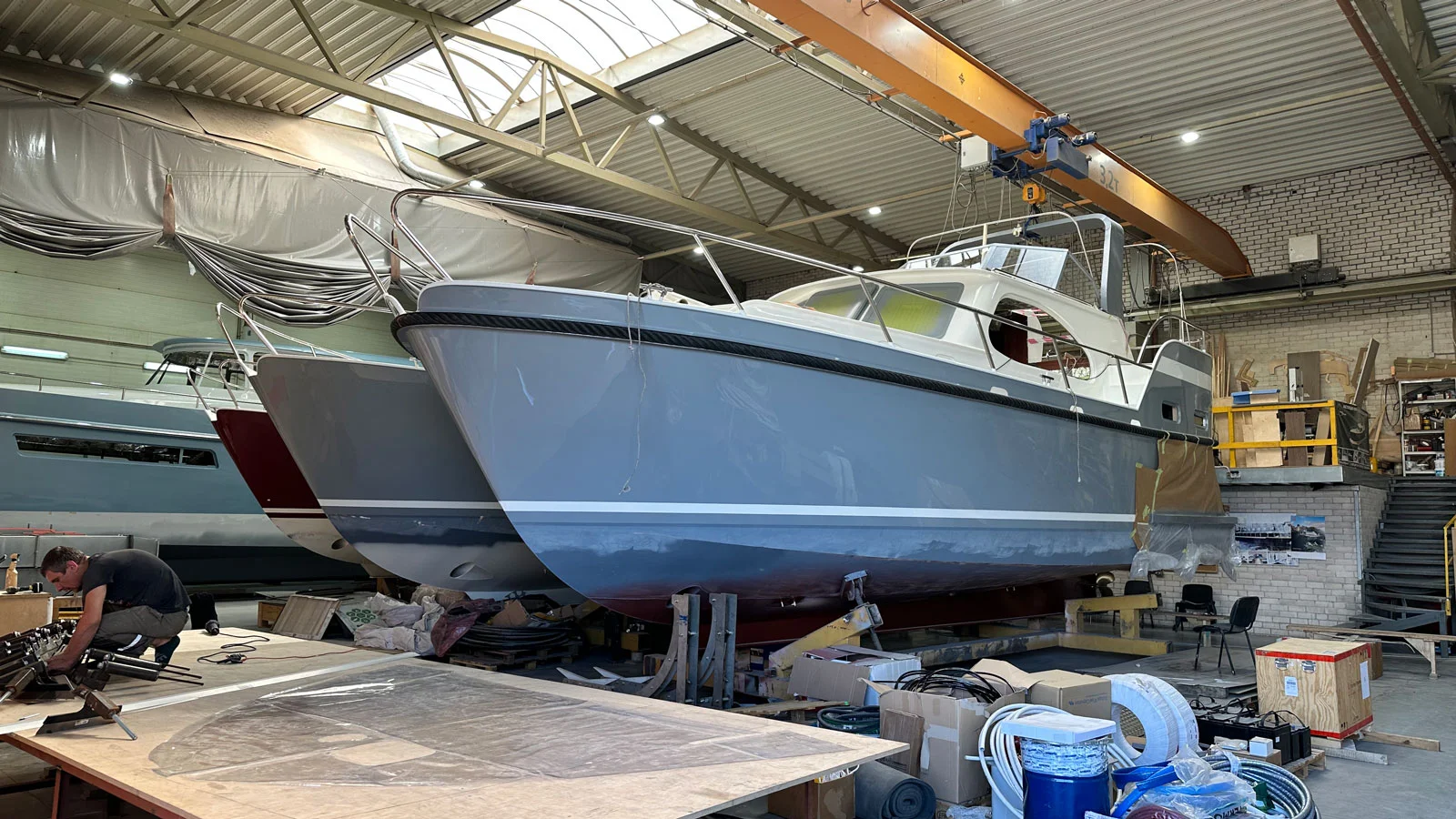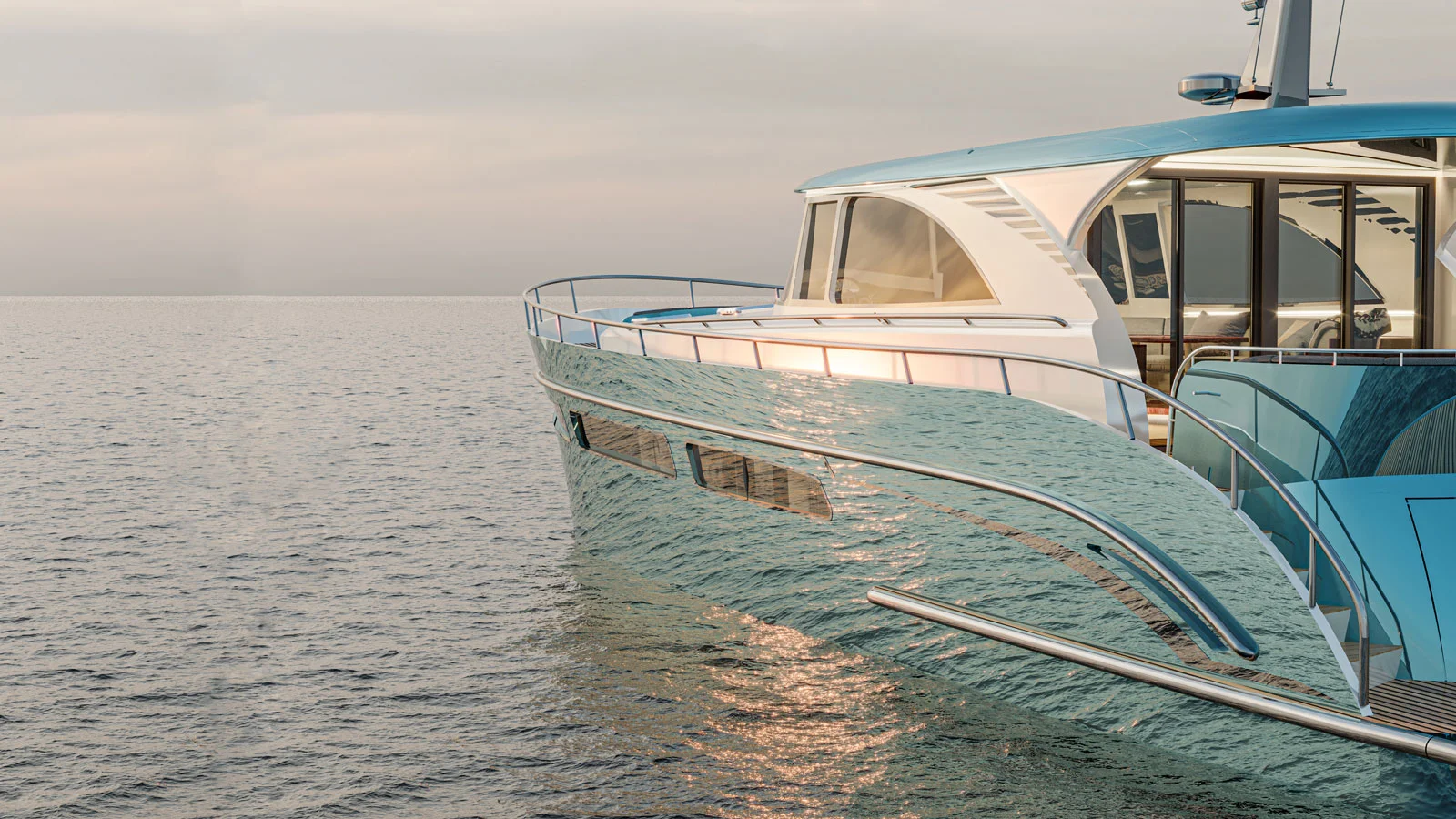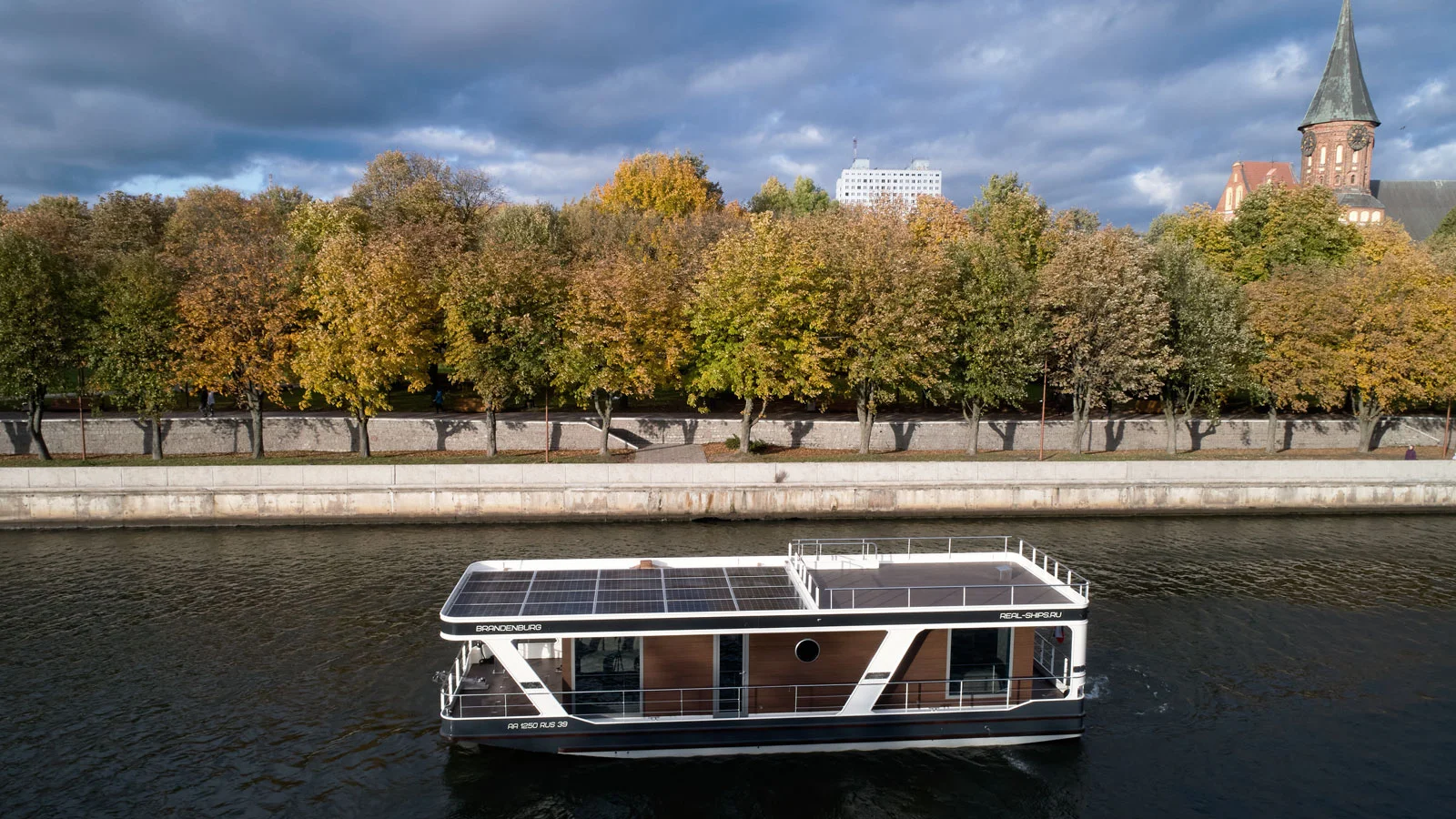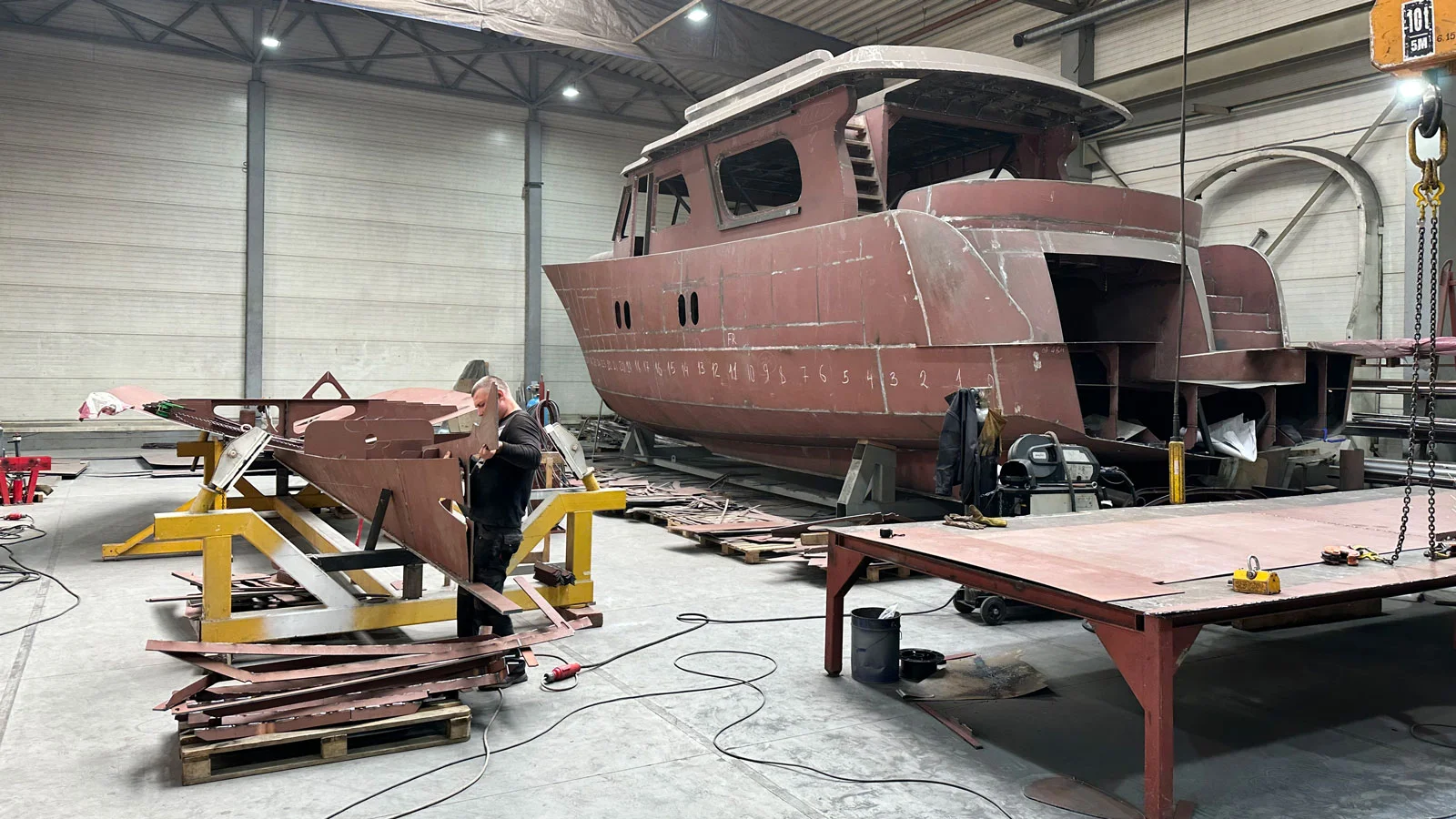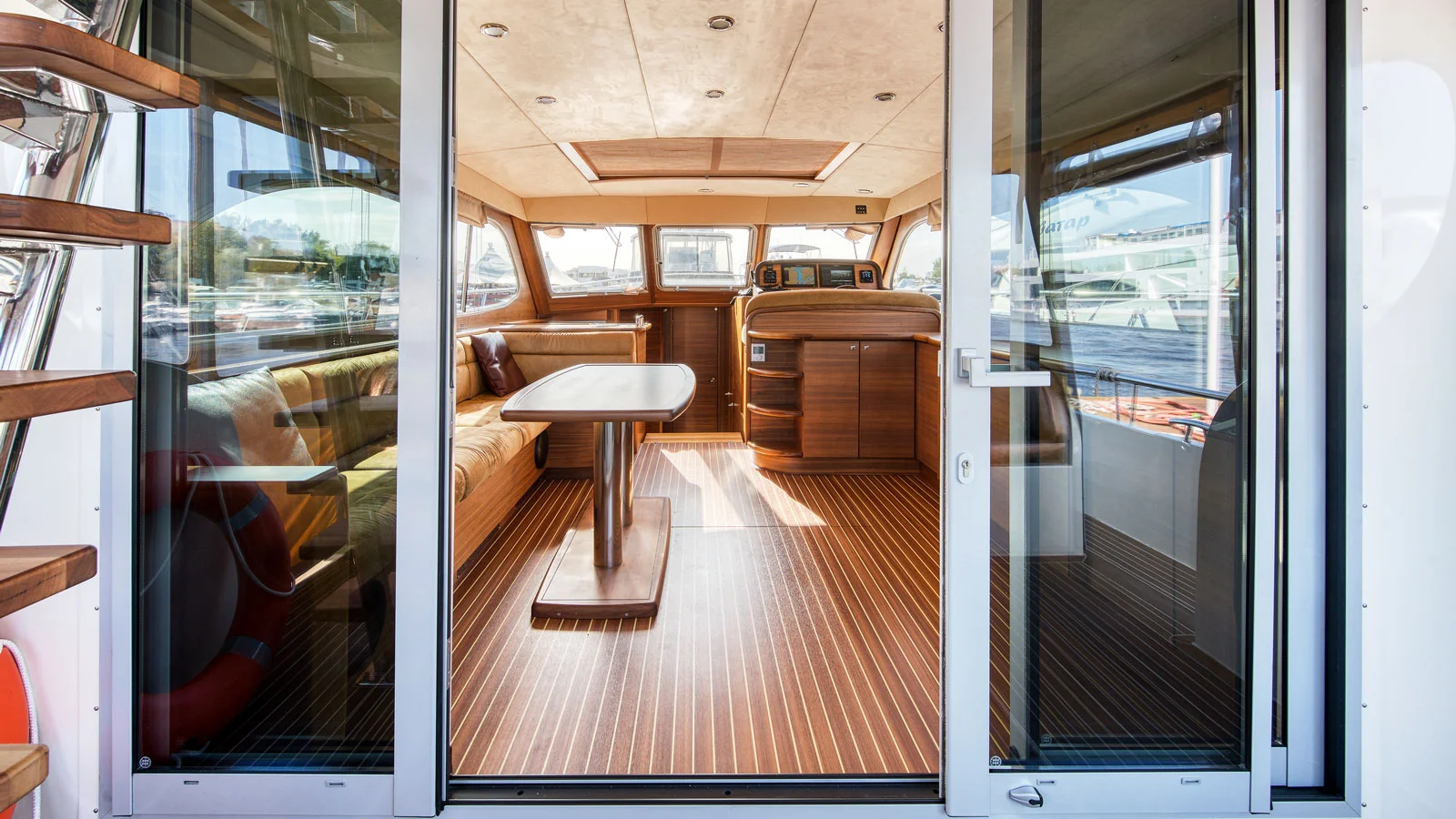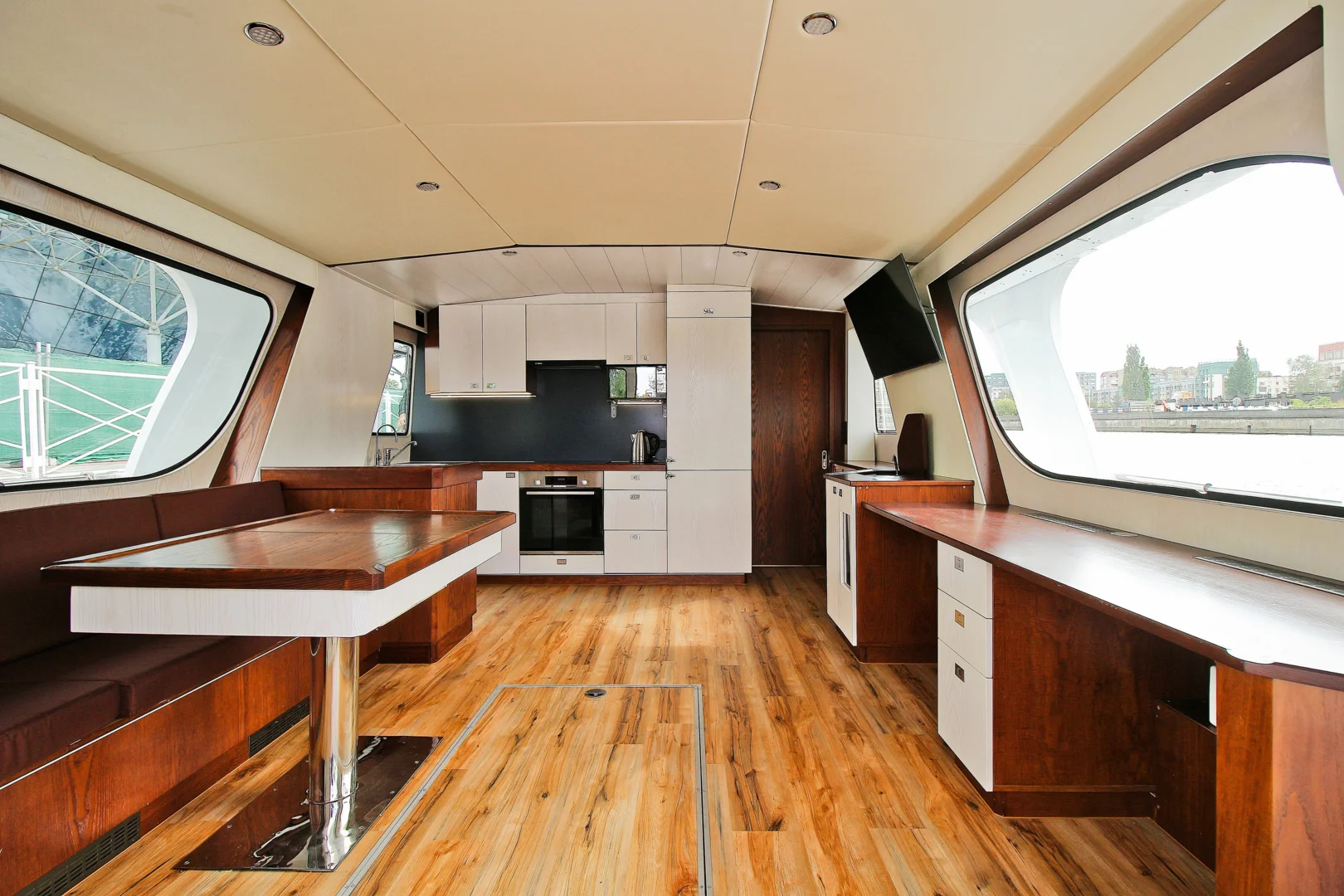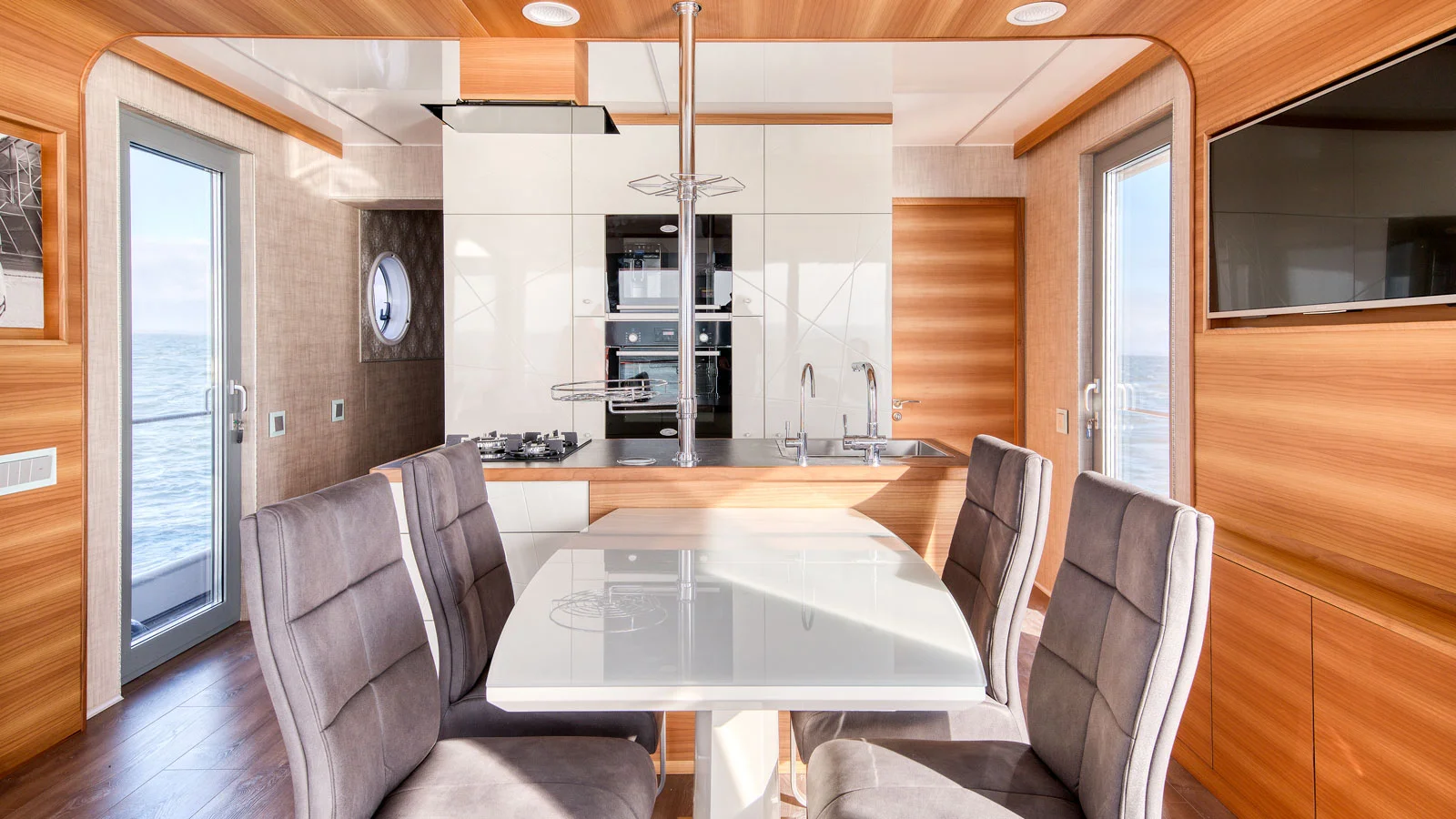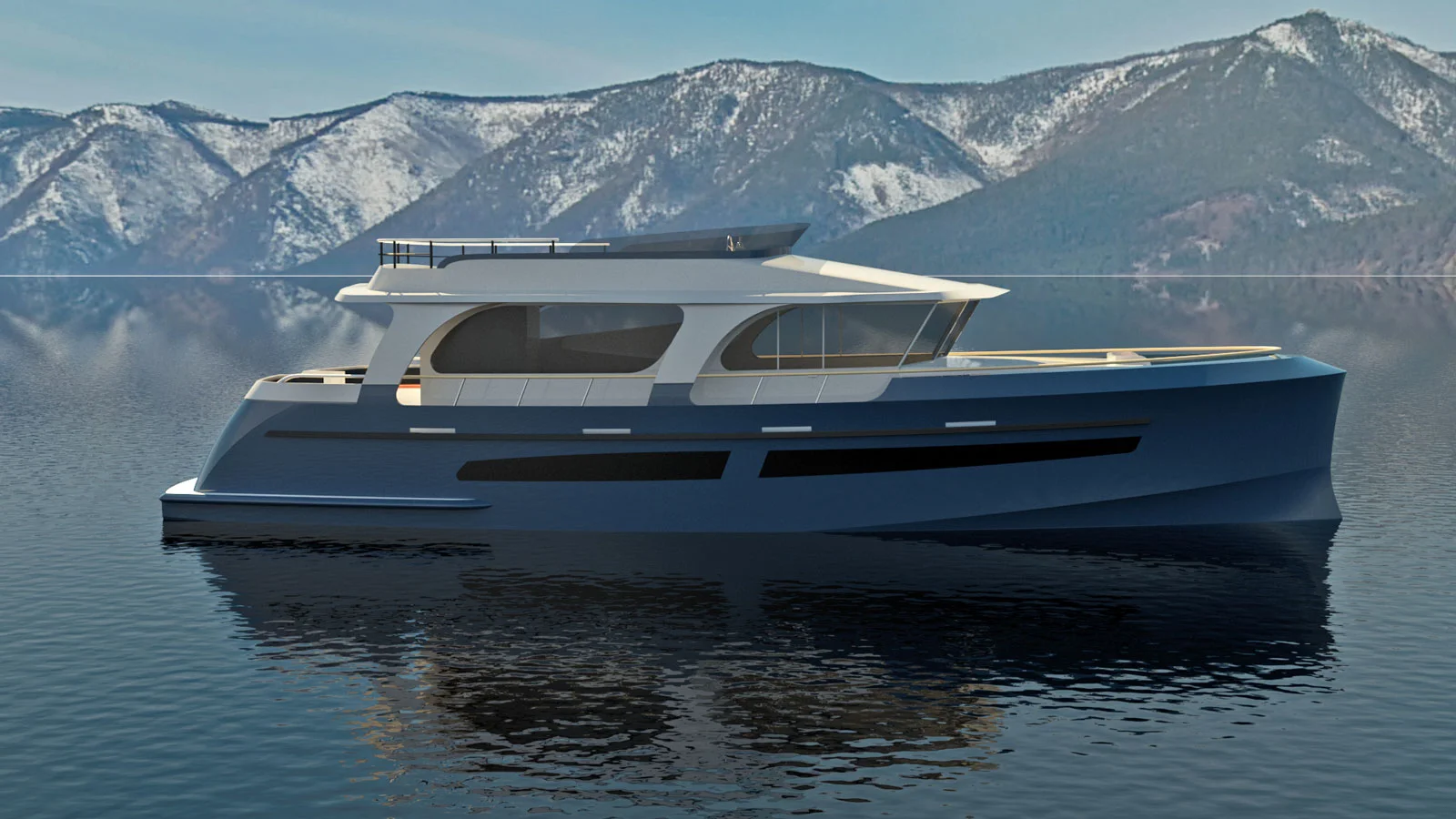Ushakov shipyards: "We know our customers and how to build the yachts that we build"
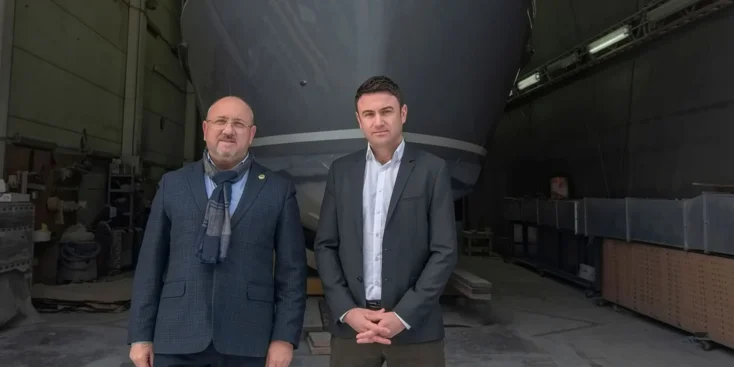
"Ushakov shipyards" facility is located within a 20-minute drive from Kaliningrad, in the village of Ushakovo, which was once founded at the Prokhladnaya river estuary that flows into the Kaliningrad Bay (aka the Vistula Lagoon)
The shipyard has quite a rare specialization for Russia: it builds steel displacement yachts. Today it is run by a father and a son, Victor and Vladimir Lider. But the reins of power are gradually being transferred to the younger generation, and that is why we decided to use the opportunity to speak to both of them: Victor has told us about the history and evolvement of the shipyard, and Vladimir has shared the plans for its future development.
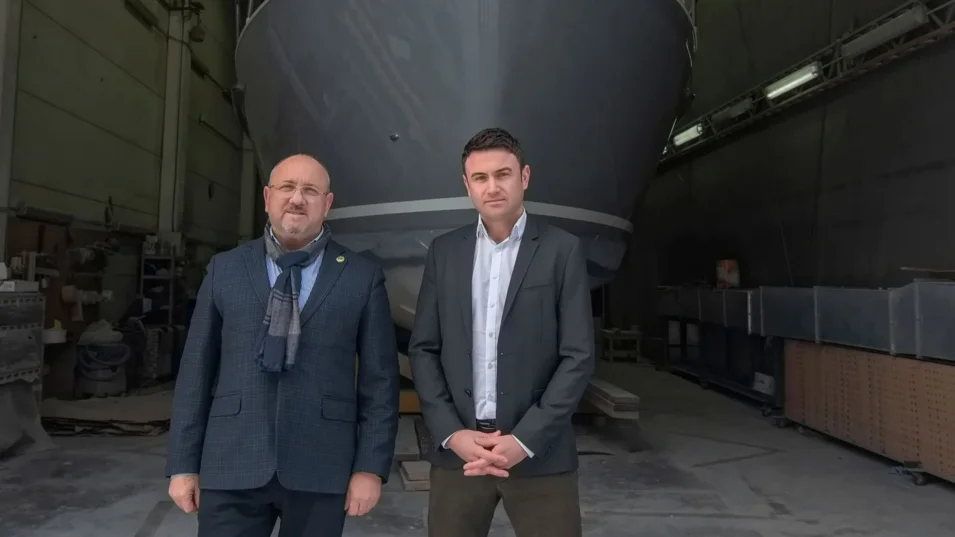
What motivated you to found a shipyard and why did you decide to build yachts in Russia?
Victor. As it is often the case, it all started out in a rather banal way, and I got prepossessed with yachts quite by chance. There is a man that we have been friends with for years, Andrey Scherban. And it’s him who got me into yachting. Once I came over to his office and found out that he wanted to buy a steel displacement yacht. He was looking at Pedro Boat, which is a Dutch shipbuilder. We had a laugh about the name, but as he got really involved in it and liked the model a lot, we decided to have a look at what else was available in Holland as an alternative. I was living in Germany at that time, so I arranged a few meetings with Dutch shipyards and went on a business trip to Friesland, which is the largest centre of small vessel construction in Holland. And that is where I got irrevocably mad about yachts, saw a lot of boats at different construction stages, touched the hulls, peeped inside, breathed in the smell of new interiors and so on. And after that I went of yards’ offices, saw the finished vessels in marinas, studied the infrastructure of water tourism. Everything changed after that trip.
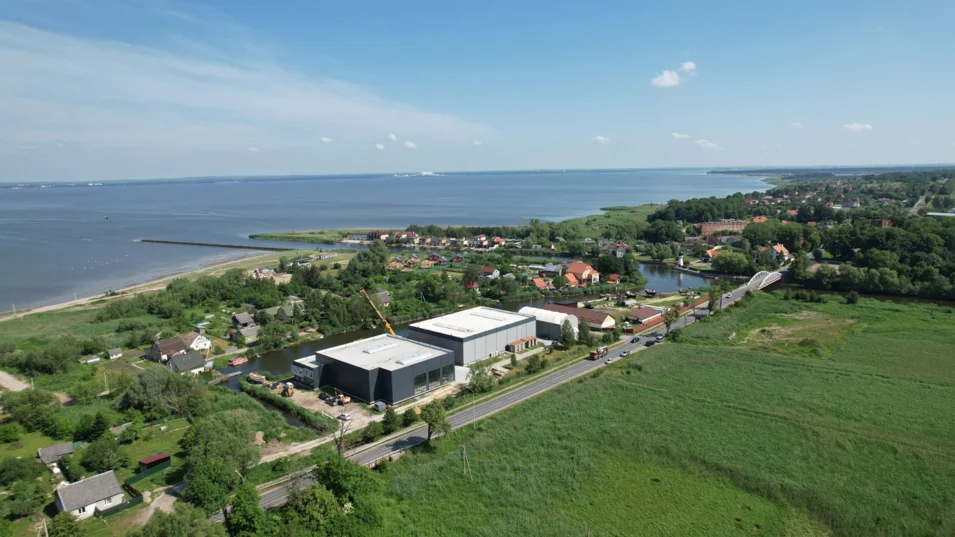
Did you decide to start building yachts when you had so little idea about them?
Victor. Certainly not. When I came back to see Andrey again, I suggested that we should build such yachts at the Dutch yards that already existed, and then sell them on the Russian market. Because he was obviously not the only person looking to buy a yacht. That is how we created “Real ships” trading house and got engaged in brokerage. There were three of us, and as co-owners we distributed our responsibilities and invited Alexander Ryskin as a director, who later stayed in this business. The work went like this: we searched for projects in Hollands, I curated the construction process, certification, inspection, shipment, etc., while the guys here were in charge of sales, finance and other issues.
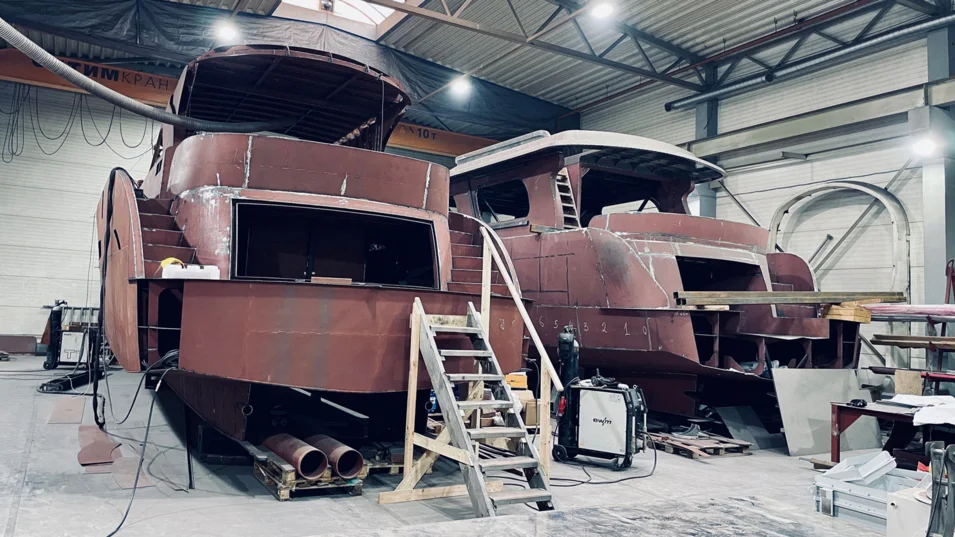
That is the way we existed for three years. People started recognizing us in the Dutch community, and we bought boats and signed deals at almost every boat show. But as this business was kind of secondary to us – we were engaged in construction business at that time – this line started suffering. There was not always enough time and so on. One day we closed the topic and went on running our main businesses. But the experience we had accumulated, the contacts, the connections and, what matters most, my love for it, prevented me from living in peace. I realized I couldn’t sleep, eat or enjoy life, as I wanted to go on working in that direction. At the same time, the experience I had gained told me that just buying and delivering boats from Holland, taking them through the customs, paying all the duties and VAT, which increased their price by almost 50%, was not write, it was insane. And that is how the idea of building a shipyard came into being. I spent a lot of time thinking, searching, trying to figure out where to start. At that time, I had a business in Saratov, but I realized that the most suitable place for different reasons was Kaliningrad region.
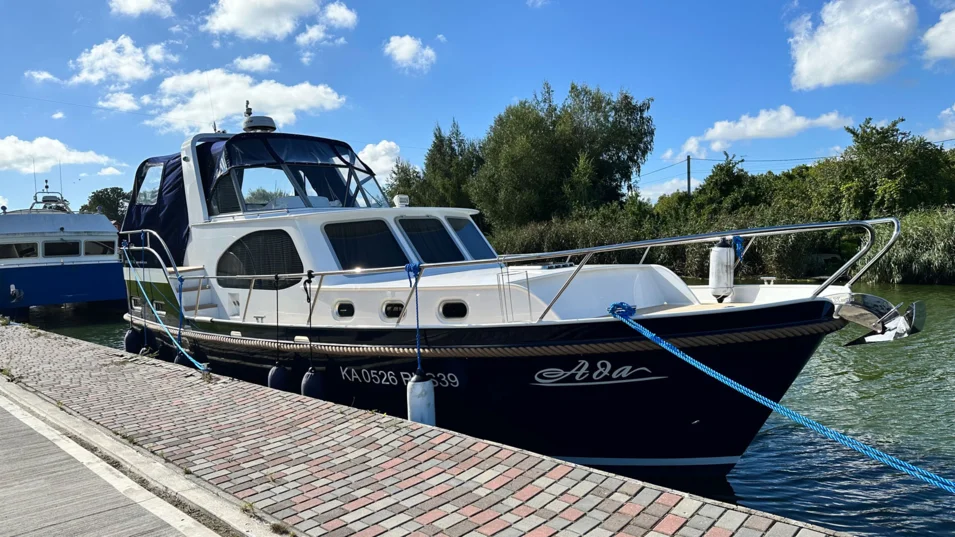
Why so? Do you come from this region? Have you got relatives here? Or are you related to it in some other way?
Victor. No, no roots, not relatives. First of all, there was and there still is the competency that we need here. There is a university that trains professionals for the shipbuilding industry; there are shipbuilding enterprises here like “Yantar” plant, ship repair companies, too. So first of all, it was about the availability of at least some specialists, and it was rather easy to bring the missing ones from Holland, Poland, Lithuania, etc. That was one of the key reasons. The second argument in favour of Kaliningrad is the Special Economic Zone and all the relevant preferences. And the third one is its closeness to Germany and Holland, because I used to live in two countries back then. Good European climate, the sea, opportunities for development, absence of direct competitors – all of it seemed to work out and it became obvious to me that the shipyard should be built here. I spent a lot of time looking at different fixer-uppers, and then came across this place. I managed to buy it on the second attempt. There was a beautiful clearing here, a river and reeds. It was 2008.
How long did it take you to build the shipyard and what kind of yachts did you start with?
Victor. I already had the first project that I had bought from Dutch Vripack company at that time, so I had a very clear idea of what I was going to build. It took about a year and a half to design it, then a year and a half to build the yard, and I can remember that in 2012 we started making our first yacht in steel. It was a 13.5-metre boat with an aft cabin. She is still sailing somewhere in Saratov, I saw the owner not long ago. What is particularly pleasant is that he still remembers the construction process and her three-week passage from Kaliningrad to Saratov as the best time of his life.
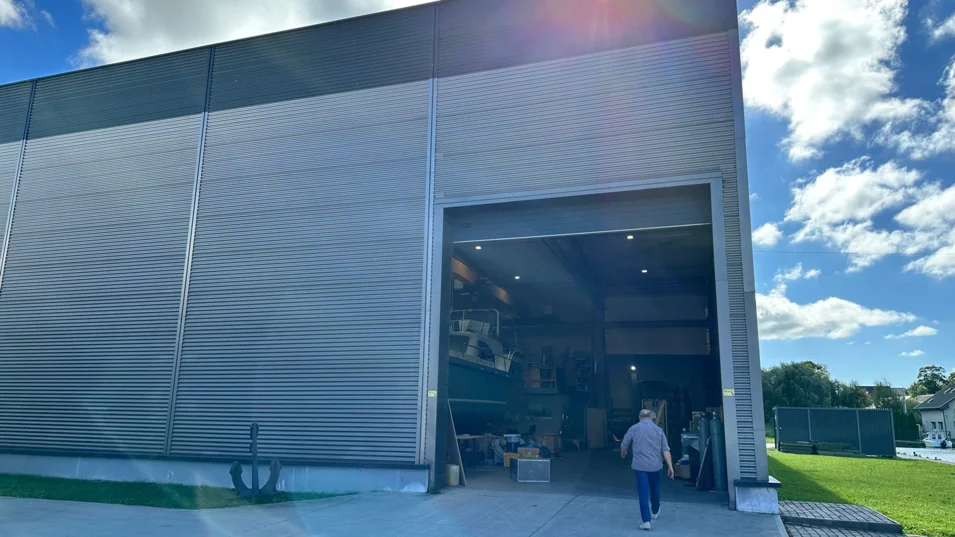
That was your first model. What was next?
Victor. By that time, I already knew it clearly that there are two ways of creating a model range for any shipbuilding company. The first one is to look for a customer, to build them some yacht, then look for another one and so on. In the end, the model range kind of appears on its own, but it’s like ‘mixed salad’, because of different people, different designers, different project engineers, different trends, etc. There are quite lot of yards like this in Holland by the way. The second way is to invest a considerable sum of money, to finance the development of a model range with one designer whose style appeals to you and build upon it. And that is the way we opted for …
So how did your model range appear in the end?
Victor. We have a feeling that here in Kaliningrad region we are kind of taken care of from above. To finance this kind of model range costs hundreds of thousands of euros! But that was different in our case. I got to know Jan Visser, the designer whose work I liked most of all, we started communicating quite closely, and I commissioned the development of our flagship to him, so that later we could scale it and make it larger, smaller, etc. I hoped that it could work out, although at that time I didn’t have a very clear idea of it all. But I was lucky again: one Dutch yard that Jan Visser had been designing a model range for, could not survive the “death valley” phase and had to go bankrupt before they could pay Jan Visser. I managed to buy the rights for their model range from the bankruptcy estate and that is how the first four models appeared. Having done some work on them with Jan, we ended up with a range of nine yachts. And entered the market with them. That is exactly when I realized how lucky I was and decided to thank the almighty for this kind of help in some way and named this model range “Respect”. It still exists and includes Respect 1300 ОС (Open Cockpit) and 1300 АC (Aft Cabin), 1500 ОC, 1500 АC and 1500 Fly.
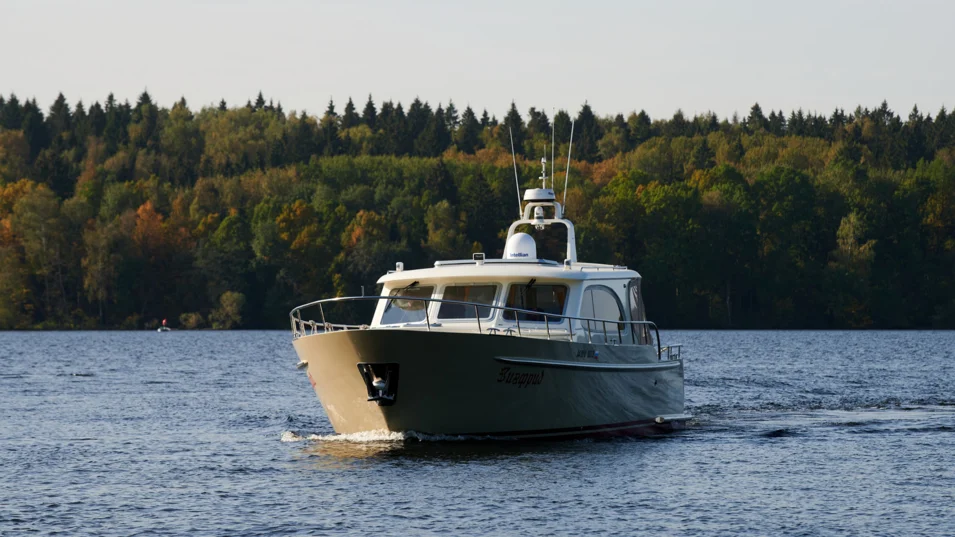
As far as I can understand, you didn’t stop at that and went on extending the model range, didn’t you?
Victor. Encouraged by this success, I arranged it with the owner of another shipyard that Jan had designed two new models for, to finance the same, but larger two hulls and exchange rights for them on a reciprocal basis. And that is how we got our Rubicon trawler and the elegant center sleeper, Tridente.
Now the first Rubicon named “Arctica” is following the Northern Sea Route, the second is under construction, and our first Tridente got painted turquoise colour two weeks ago, as you could see. The Rubicon range comprises yachts of 17.5 to 19.90 metres long, and the length of the first Tridente unit is 18.30 m, although the range allows us to build both somewhat larger and smaller yachts.
At some point, we felt that there was a demand for smaller, simpler and therefore more affordable yachts on the market. After some negotiations with our designer, Jan Visser, he agreed to sell the rights for the range of smaller yachts of trawler type he had created earlier that we named Courage. There are three models there now: 35 ОC, 39 ОC and 39 АC, where AC stands for an aft cabin, and OC for an open cockpit. Now the fourth hull of the 39-foot model is in build, and we have already built two 35-foot units. This model range sells easier and faster.
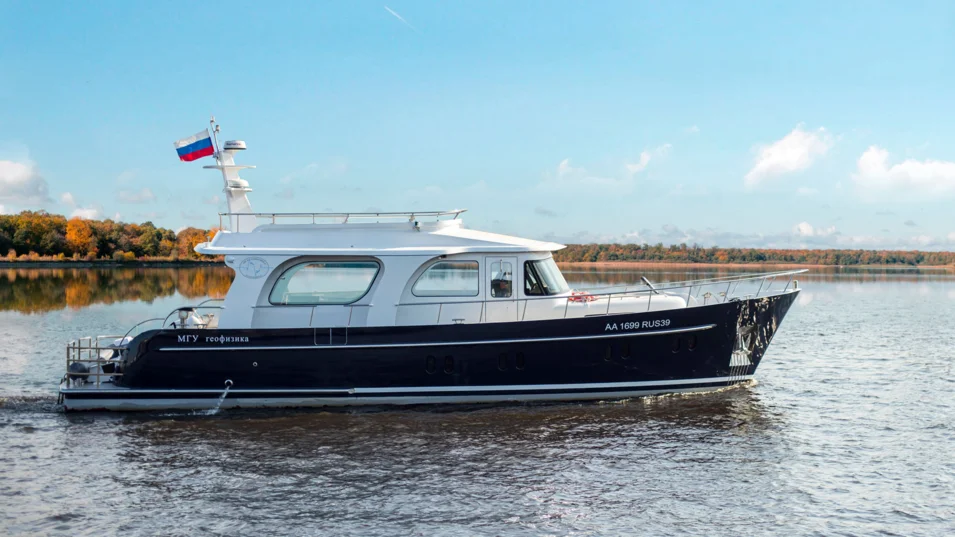
You are one of just a few yards in Russia that work with steel. How did you come to it?
Victor. I believe that there is a customer for any product. It is obvious now that the companies that sell aluminium power boats are growing fast on the market now. That is quite understandable, as the water areas are huge, people want speed to get back and forth fast. There are customers for all kinds of products – GRP boats, sailing vessels or any other. We have had a focus on steel displacement yachts from the start. And that is why our brand was called “Real ships” and its philosophy is based on ideas like “building real ships for real men”, “those who understand something about this life are in no hurry”, and “everything is for real”. I do believe that it is best for Russian water areas. Besides, there are evolutionary projects going on in yachting just like in any other spheres. When you are thirty, you want a speedy powerboat, a naked torso, a beach, girls, etc. By the time you are forty you feel like taking part in a sailing regatta, and when you get fifty and you have already seen a lot and settled down, you come to steel displacement yachts and comfortable, leisurely trips. And sixty the idea is ‘if not now, then when?’ And you start realizing the things that you have been dreaming of all your life, like going to Solovki, or Spitsbergen, or following the Northern Sea Route or somewhere else depending on the books you used to read as a child. And after you get seventy the best option is probably a houseboat, so that you could enjoy living on the water to the full, admiring the sunrise and the sunset, listening to the creaking of the ropes that is such a good accompaniment for reflections on life.
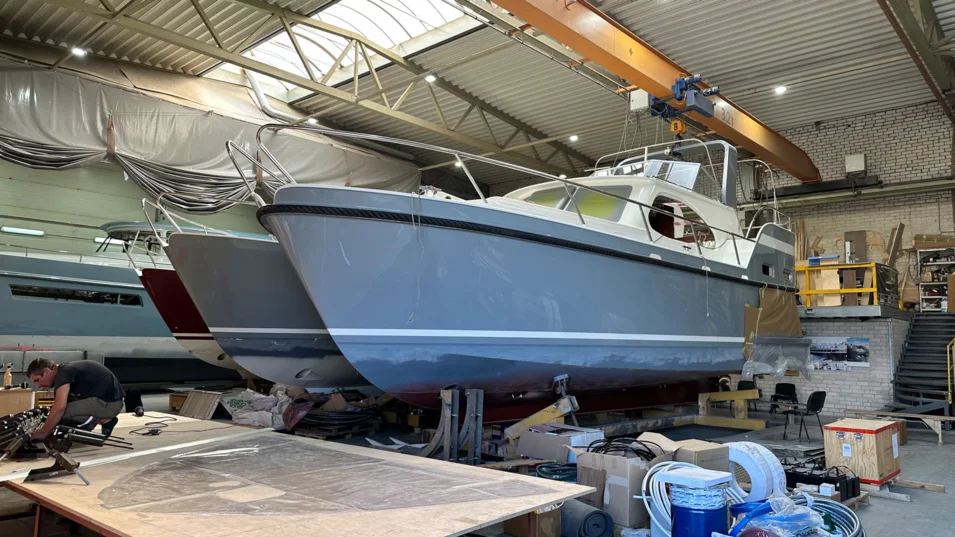
I have seen your new expedition yacht projects, Explorer 24 M and Explorer 28 M, as well as the concept of an expedition catamaran. Are they the future of the yard?
Vladimir. We are moving gradually towards it, and we understand that we have grown out of 10-12 meters. Besides, we can see an increasing demand for 15-20-meter yachts. At present there is a 20-metre unit in build at our yard, and in the nearest future we would like to build 24-32-metre explorers. But before that the company has to go through a few natual development stages. Our facilities allow us to build yachts up to 20 metres long, and then we will have to think of new production sites.
So your current facilities do not allow you to build yachts over 20 metres, do they?
Victor. They don't, but we have various ideas in this respect. Such projects are often built on a contract basis, and we can find a suitable facility if necessary. Maybe in Kaliningrad region, or somewhere else in Russia or abroad. Another development option that we are exploring now is franchise, which will allow people to build boats based on our projects, technologies and under our supervision at other yards and in other cities of Russia. So we are looking for people who are involved in this topic and are ready to teach them how to build and how to behave on the market.
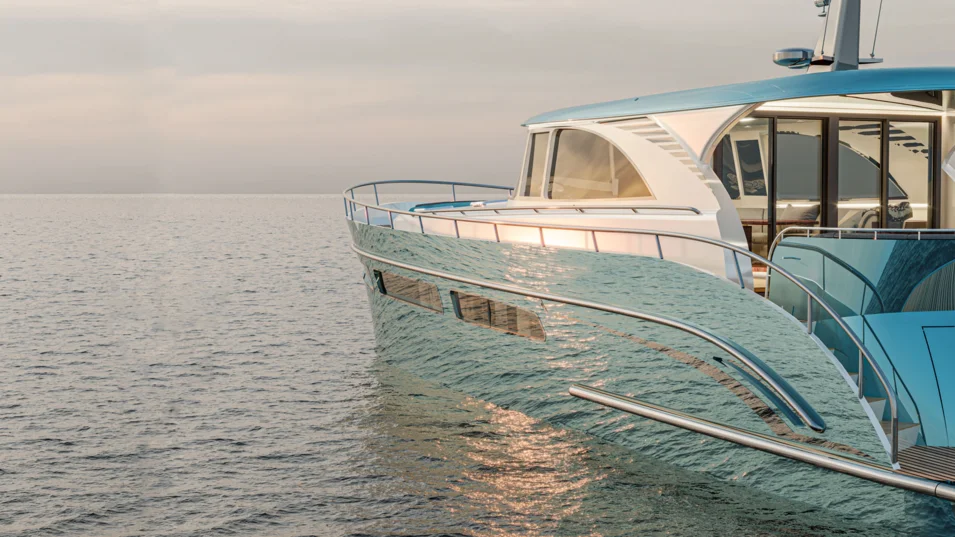
What kind of vessels can "Ushakov shipyards" build today?
Victor. First of all, they are our trawler type series: Courage, Respect, Tridente and Rubicon. We also build houseboats. One of them is moored in the center of Kaliningrad next to the Museum of the World Ocean, and I have been living there for four years now. It is an amazing feeling of living on the water right in the centre of the city and having an opportunity to move anywhere any time without leaving your comfortable home.
Vladimir. As Victor puts it jokingly, our houseboats are more of boats than houses, because most houseboats are built for being moored most of the time, while we have created ours for moving about and travelling. So, for this reason ours is a steel monohull, a ‘go anywhere’ boat that can sail rivers, lakes, reservoirs, etc.
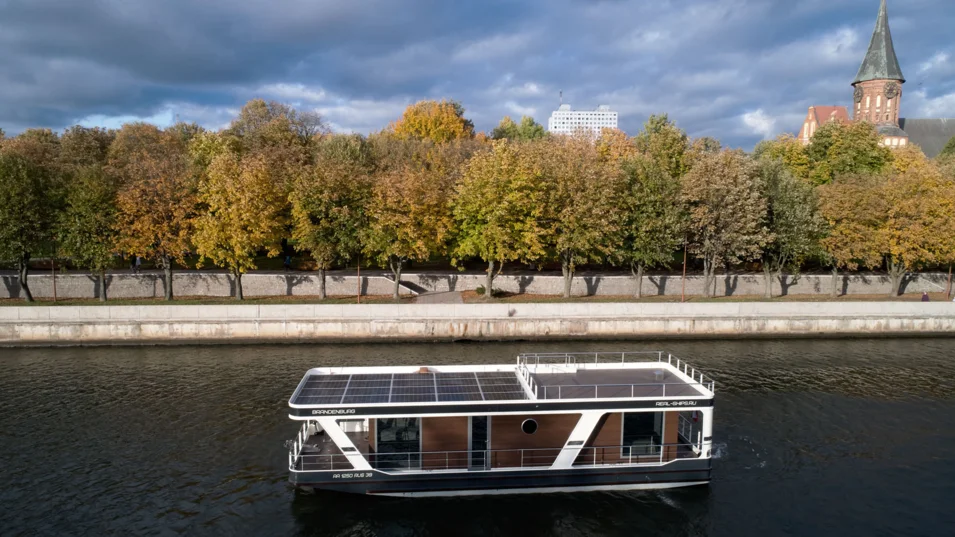
I’d like to add a little about our Rubicon model. We position is as an expedition trawler because of her CE Class A, which is an ocean class. We have already built one boat named “Arctica” for Moscow State University-Geophysics in 2020. It was a really interesting project and now the boat is operated in the severe conditions beyond the Arctic Circle: she is based in Dudinka and is used for various scientific and technical tasks. This yacht is a mix of a trawler type vessel and an explorer, and she showcases our customization abilities really well.
The next step we are going to take in the nearest future is construction of the first Rubicon 1990. At present, we are negotiating the project with several customers. And one more direction for our shipyard development is modern passenger excursion boats of aluminium. We have already built two vessels like this: “Sotalya” for 36 passengers, and “Iniya” for 54 passengers. The first one is operated in Nizhny Novgorod, and the second one is in Pskov. We have even built a special workshop with two slipways allowing us to build this kind of vessels of up to 25 metres long.
What is the shipyard’s current production volume?
Vladimir. If we talk about yachts, our production capacity is up to 10 hulls a year. As you could see, at present there are five hulls at different construction stages, one more Courage 39 AC has just been launched and is getting ready for delivery.
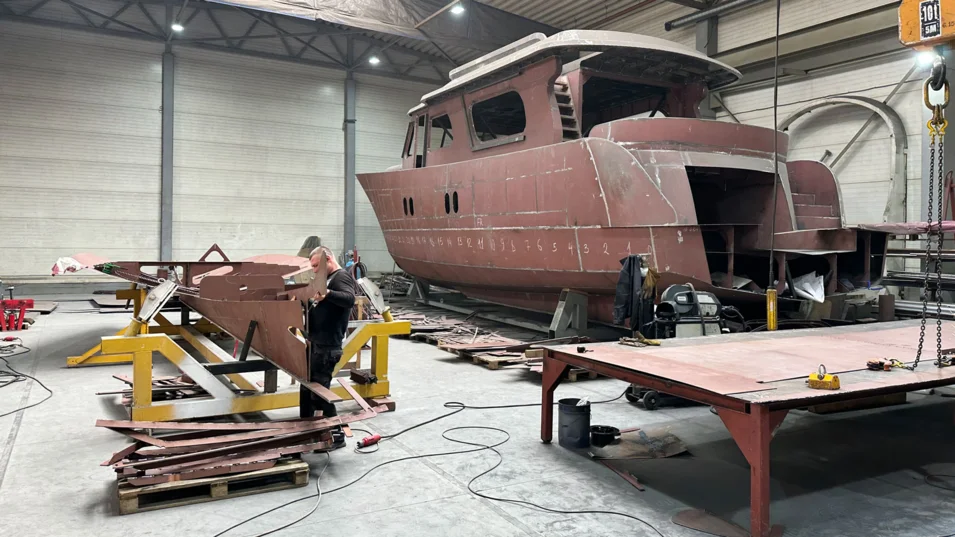
In what regions do you have your representatives and how do you provide after-sales service?
Victor. We chose direct sales. We don’t spend on advertising, as we believe in PR more. As we launch several units every year, we arrange bright and interesting events every time. Our customers are in toucht with us, and on the whole we avoid working with any intermediaries, although we do work with some brokers and quite successfully. So far, we have been able to provide after-sales services on our own.
What about suppliers? What is the proportion of Russian and imported components and do you have any difficulty with the supply of foreign equipment?
Vladimir. If we talk about private yachts, then they are 70-80% of imported materials and components, starting from engines and navigation systems and finishing with paints. It is quite a large share, which is not easy and not fast to replace, as in fact there is no yachtbuilding market in our country. There is a shipbuilding market, but it’s different.
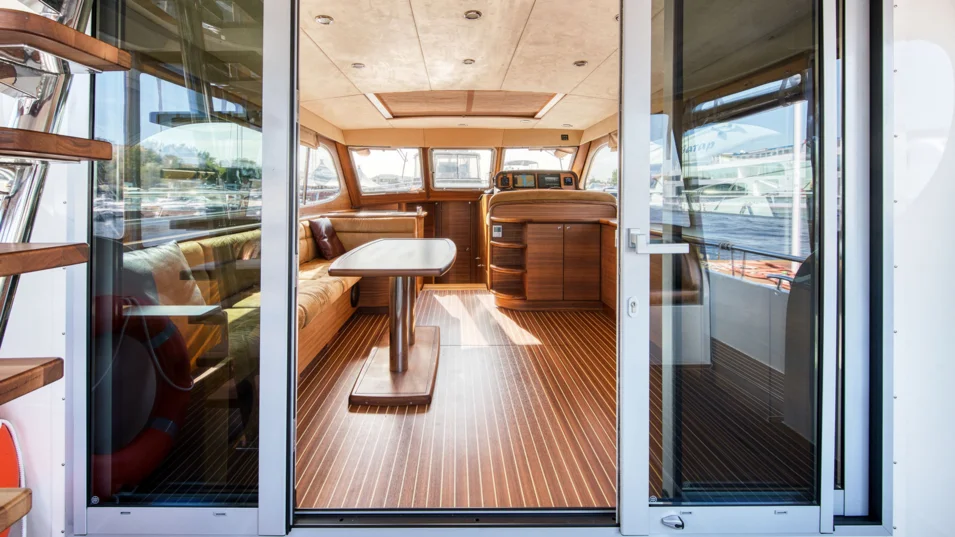
We have substituted all the imported components that we could without sacrificing quality. For instance, we buy shipbuilding steel in Russia, and it is no worse than Dutch. We produce a lot of interior and finishing materials that we used to bring from Italy in our new workshop that was built as part of "Import Substitution" program from Kaliningrad Region Entrepreneurship Support Fund. We make lightweight sandwich panels covered with natural veneer, noise-insulation panels and other materials for wall and floor structures ourselves. We are planning to develop this direction and would like not only to produce the interiors for our own yachts, but to make them on a contract basis, too. We are also planning to build scale models, which will allow us to work on interiors along with building the hulls and shorten the delivery time in this way. We have just launched a project like this together with our partners and we are working on the first Tridente unit in this way: the yacht is being built at our yard, and the interiors are created at our partner’s factory.
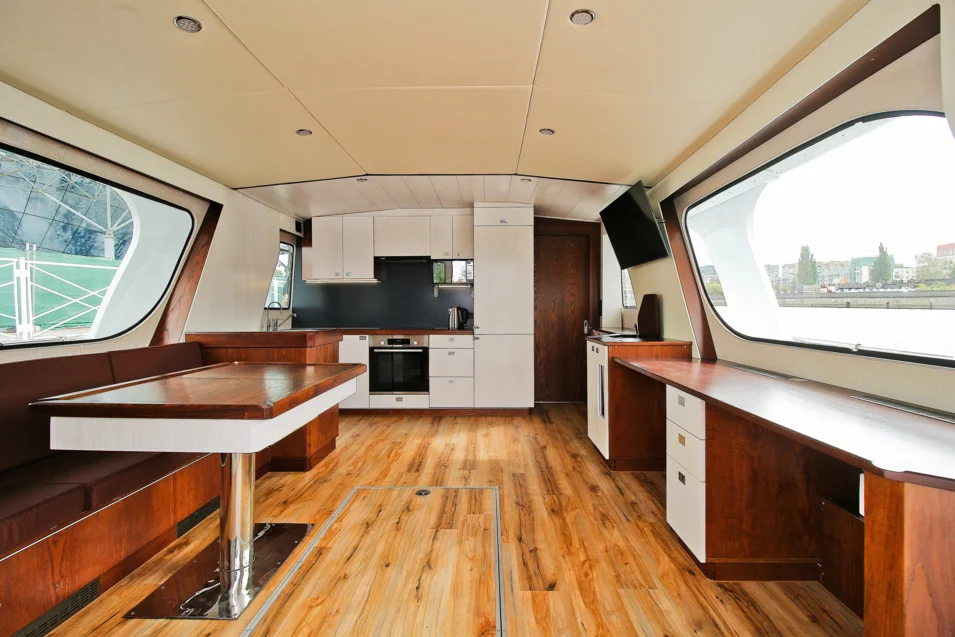
Who designs exteriors, interiors and naval architecture for you at present?
Victor. After Jan Visser left, I spent a lot of time looking for a designer who could go on developing our model range, and Explorer 24 M, 28 M and 32 М, as well as Rubicon 1990 are owed to an American designer of Russian origin. We will make his name public when we unveil this range.
We create and visualize interiors in-house, as we have gained some experience and know the details. Sometimes, when the owner’s expectations go beyond our capabilities, we involve other designers, but largely we manage it on our own.
Vladimir. For one of our houseboats that headed for Baikal, we collaborate with Maxim Lodkin (Russia) and Dmitry Reingard (Poland). They developed all the interiors from start to finish. A lot depends on the project and on the owner’s expectations. As we know, the larger the yacht, the more customization she requires. That is why we can work with Dutch designers, Russian designers and we have our own in-house professionals.
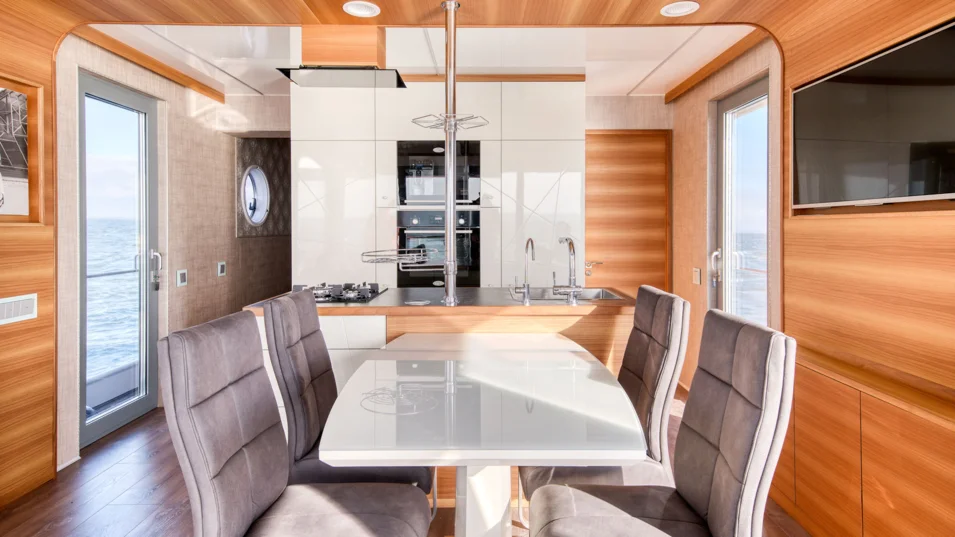
Victor. As for naval architecture, at present we are capable of designing yachts here at "Ushakov shipyards" on our own, but with Jan Visser’s “heritage” in mind, of course.
Are you planning to work with any materials apart from steel?
Victor. We are used to working with steel, aluminium and wood, and that is what we are planning to work with in the future. We will definitely not switch to GRP. Our strong point is steel displacement yachts and aluminium commercial vessels that we’ve come to build very well indeed and “for real”. If we get a contract for an expedition catamaran that we are currently working on actively with Albert Nazarov, we will build it of marine aluminium alloy, too.
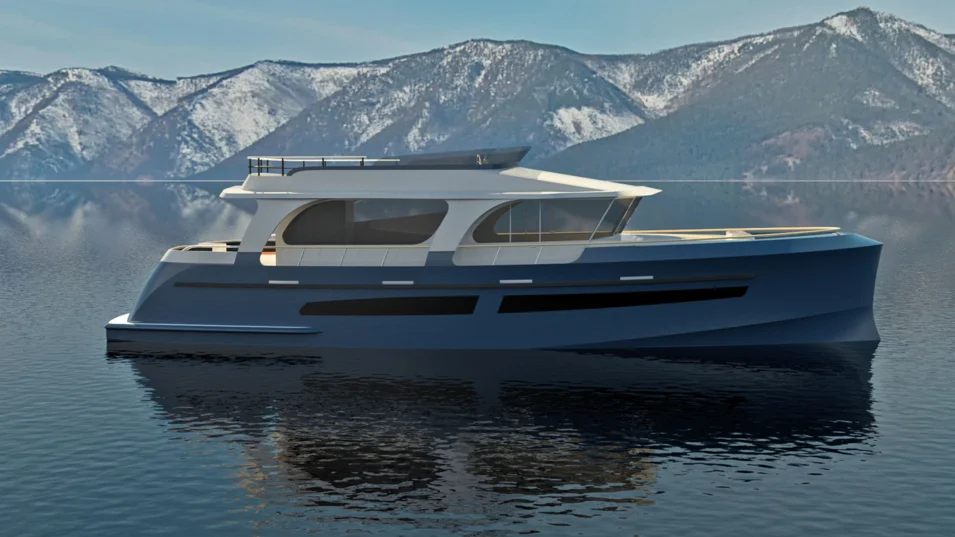
Which boats do you think are in demand on the Russian market today and are customer preferences going to change?
Victor. I think all kinds of boats are in demand on the Russian market. When there is a demand, there is a supply. No one would build such a huge number of aluminium powerboats if nobody bought them. Water tourism is developing actively now, people like relaxing on the water. There was a time when it was very popular, and on the rise, then there was a down, and now it is flourishing again, so all kind of vessels can find their owners.
Vladimir. We get requests from customers who want to sail the waters of Russia comfortably and safely. It is important for them not just to be able to get away for a weekend, but to go on long voyages and expeditions in comfort.
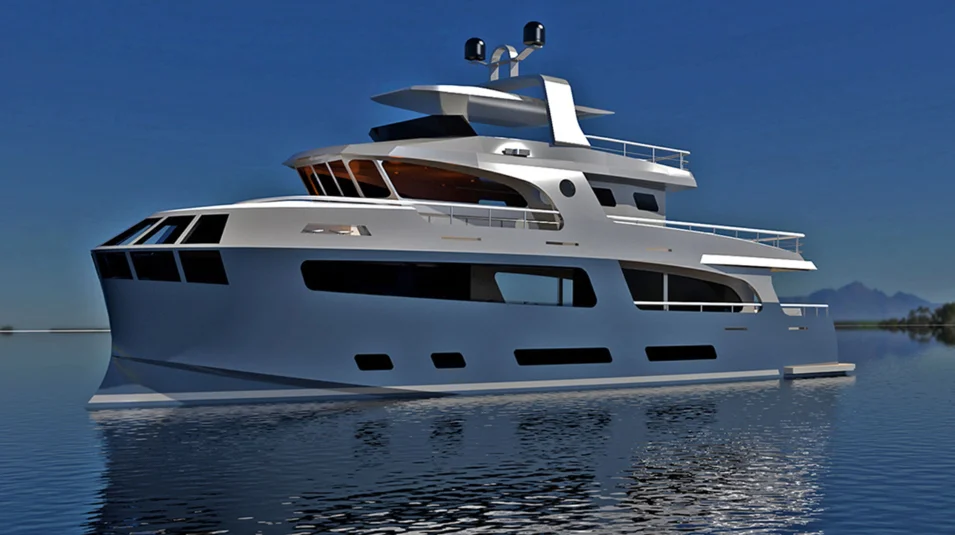
Victor. In my opinion, customer preferences are not a matter of fashion or trends, but of age. People have different needs in different periods of their life. Our customer, who we know and understand very well, is a man of 40-60, an accomplished, enthusiastic personality. And that is exactly why they want our yacht. We can surely build other kinds of boats, but why? We’d rather do what we can do well.
You have successfully subscribed to our newsletter
